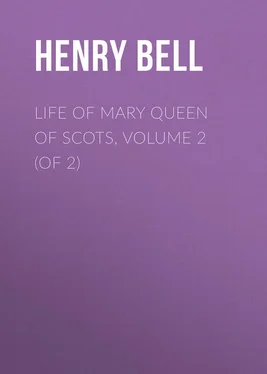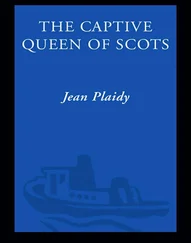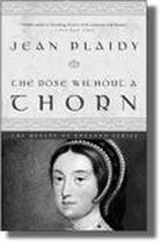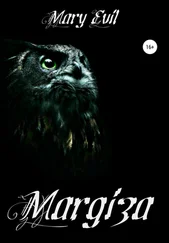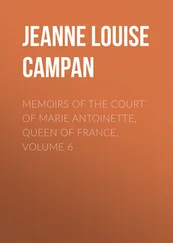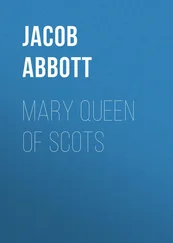Henry Bell - Life of Mary Queen of Scots, Volume 2 (of 2)
Здесь есть возможность читать онлайн «Henry Bell - Life of Mary Queen of Scots, Volume 2 (of 2)» — ознакомительный отрывок электронной книги совершенно бесплатно, а после прочтения отрывка купить полную версию. В некоторых случаях можно слушать аудио, скачать через торрент в формате fb2 и присутствует краткое содержание. Жанр: foreign_antique, foreign_prose, на английском языке. Описание произведения, (предисловие) а так же отзывы посетителей доступны на портале библиотеки ЛибКат.
- Название:Life of Mary Queen of Scots, Volume 2 (of 2)
- Автор:
- Жанр:
- Год:неизвестен
- ISBN:нет данных
- Рейтинг книги:5 / 5. Голосов: 1
-
Избранное:Добавить в избранное
- Отзывы:
-
Ваша оценка:
- 100
- 1
- 2
- 3
- 4
- 5
Life of Mary Queen of Scots, Volume 2 (of 2): краткое содержание, описание и аннотация
Предлагаем к чтению аннотацию, описание, краткое содержание или предисловие (зависит от того, что написал сам автор книги «Life of Mary Queen of Scots, Volume 2 (of 2)»). Если вы не нашли необходимую информацию о книге — напишите в комментариях, мы постараемся отыскать её.
Life of Mary Queen of Scots, Volume 2 (of 2) — читать онлайн ознакомительный отрывок
Ниже представлен текст книги, разбитый по страницам. Система сохранения места последней прочитанной страницы, позволяет с удобством читать онлайн бесплатно книгу «Life of Mary Queen of Scots, Volume 2 (of 2)», без необходимости каждый раз заново искать на чём Вы остановились. Поставьте закладку, и сможете в любой момент перейти на страницу, на которой закончили чтение.
Интервал:
Закладка:
Darnley was of course greatly offended that any of his former accomplices should be received again into favour. They would return only to force him a few steps farther down the ladder, to the top of which he had so eagerly desired to climb. They were recalled too at the very time when he had it in contemplation, according to common report, to seize on the person of the young Prince, and, after crowning him, to take upon himself the government as his father. Whether this report was true or not, (and perhaps it was a belief in it which induced the Queen to remove shortly afterwards from Stirling to Edinburgh), it is certain that Darnley declared he “could not bear with some of the noblemen that were attending in the Court, and that either he or they behoved to leave the same.” 17 17 Keith – Preface, p. viii.
He accordingly left Stirling on the 24th of December, the very day on which Morton’s pardon was signed, to visit his father at Glasgow. But it was not with Mary he had quarrelled, with whom he had been living for the last ten days, and whom he intended rejoining in Edinburgh, as soon as she had paid some Christmas visits in the neighbourhood of Stirling. 18 18 Keith, p. 364.
CHAPTER II.
OCCURRENCES IMMEDIATELY PRECEDING DARNLEY’S DEATH
We are now about to enter upon a part of Mary’s history, more important in its results, and more interesting in its details, than all that has gone before. A deed had been determined on, which, for audacity and villany, has but few parallels in either ancient or modern story. The manner of its perpetration, and the consequences which ensued, not only threw Scotland into a ferment, but astonished the whole of Europe; and, even to this day, the amazement and horror it excited, continue to be felt, whenever that page of our national history is perused which records the event. Ambition has led to the commission of many crimes; but, fortunately for the great interests of society, it is only in a few instances, of which the present is one of the most conspicuous, that it has been able to involve in misery, the innocent as well as the guilty. But, even where this is the case, time rescues the virtuous from unmerited disgrace, and, causing the mantle of mystery to moulder away, enables us to point out, on one hand, those who have been unjustly accused, and, on the other, those who were both the passive conspirators and the active murderers. A plain narrative of facts, told without violence or party-spirit, is that upon which most reliance will be placed, and which will be most likely to advance the cause of truth by correcting the mistakes of the careless, and exposing the falsehoods of the calumnious.
The Earl of Bothwell was now irrevocably resolved to push his fortunes to the utmost. He acted, for the time, in conjunction with the Earl of Murray, though independently of him, using his name and authority to strengthen his own influence, but communicating to the scarcely less ambitious Murray only as much of his plans as he thought he might disclose with safety. Bothwell was probably the only Scottish baron of the age over whom Murray does not appear ever to have had any control. His character, indeed, was not one which would have brooked control. On Mary’s return home, so soon as he perceived the ascendancy which her brother possessed over her, he entered into a conspiracy with Huntly and others, to remove him. The conspiracy failed, and Bothwell left the kingdom. He was not recalled till Murray had fallen into disgrace; and though the Earl was subsequently pardoned, he never regained that superiority in Mary’s councils he had once enjoyed. But Bothwell hoped to secure the distinction for himself; and, that he might not lose it as Murray had done, after it was once gained, he daringly aimed at becoming not merely a prime minister, but a king. The historians, therefore, (among whom are to be included many of Mary’s most zealous defenders), who speak of Bothwell as only a “cat’s-paw” in the hands of Murray and his party, evidently mistake both the character of the men, and the positions they relatively held. Murray and Bothwell had both considerable influence at Court; but there was no yielding on the part of either to the higher authority of the other, and the Queen herself endeavoured, upon all occasions, to act impartially between them. We have found her frequently granting the requests of Murray in opposition to the advice of Bothwell; and there is no reason to suppose, that, when she saw cause, she may not have followed the advice of her Lord High Admiral, in preference to that of her brother. A circumstance which occurred only a few days after the baptism of James VI., strikingly illustrates the justice of these observations. It is the more deserving of attention, as the spirit of partiality, which has been unfortunately so busy in giving an erroneous colouring even to Mary’s most trifling transactions, has not forgotten to misrepresent that to which we now refer.
Darnley’s death being resolved, Bothwell began to consider how he was to act after it had taken place. He probably made arrangements for various contingencies, and trusted to the chapter of accidents, or his own ingenuity, to assist him in others. But there was one thing certain, that he could never become the legal husband of Mary, so long as he continued united to his own wife, the Lady Jane Gordon. Anticipating, therefore, the necessity of a divorce, and aware that the emergency of the occasion might not permit of his waiting for all the ordinary forms of law, he used his interest with the Queen at a time when his real motives were little suspected, to revive the ancient jurisdiction of the Catholic Consistorial Courts, which had been abolished by the Reformed Parliament of 1560, and the ordinary civil judges of Commissary Courts established in their place. In accordance with his request, Mary restored the Archbishop of St Andrews, the Primate of Scotland, to the ancient Consistorial Jurisdiction, granted him by the Canon laws, and discharged the Commissaries from the further exercise of their offices. Thus, Bothwell not only won the friendship of the Archbishop, but secured for himself a court, where the Catholic plea of consanguinity might be advanced, – the only plausible pretext he could make use of for annulling his former marriage. This proceeding, however, in favour of the Archbishop and the old faith, gave great offence to the Reformed party; and when the Primate came from St Andrews to Edinburgh, at the beginning of January, for the purpose of holding his court, his authority was very strenuously resisted. The Earl of Murray took up the subject, and represented to Mary the injury she had done to the true religion. Bothwell, of course, used every effort to counteract the force of such a representation; but he was unsuccessful. By a letter which the Earl of Bedford wrote to Cecil from Berwick, on the 9th of January 1567, we learn that the Archbishop was not allowed to proceed to the hearing of cases, and that “because it was found to be contrary to the religion, and therefore not liked of by the townsmen; at the suit of my Lord of Murray , the Queen was pleased to revoke that which she had before granted to the said bishop.” Probably the grant of jurisdiction was not “revoked,” but only suspended, as Bothwell subsequently availed himself of it; but even its suspension sufficiently testifies, that Mary, at this period, listened implicitly and exclusively neither to one nor other of her counsellors. 19 19 Keith, p. 151. – Laing, vol. ii. p. 76. – Chalmers, vol. ii. p. 268. – Whittaker, in endeavouring to prove (vol. ii. p. 322) that the Catholic Ecclesiastical Courts had never been deprived of their jurisdiction, and that, consequently, there was no restoration of power to the Archbishop of St Andrews, evidently takes an erroneous view of this matter. In direct opposition to such a view, Knox, or his continuator, has the following account of the transaction: – “At the same time, the Bishop of St Andrews, by means of the Earl of Bothwell, procured a writing from the Queen’s Majesty, to be obeyed within the Diocess of his Jurisdiction, in all such causes as before, in time of Popery, were used in the Consistory, and, therefore, to discharge the new Commissioners; and for the same purpose, came to Edinburgh in January, having a company of one hundred horses, or more, intending to take possession according to his gift lately obtained. The Provost being advertised thereof by the Earl of Murray, they sent to the Bishop three or four of the Council, desiring him to desist from the said matter, for fear of trouble and sedition that might rise thereupon; whereby he was persuaded to desist at that time.” – Knox, p. 403. This account is not quite correct, in so far as the Earl of Murray alone, unsupported by Mary’s authority, is described as having diverted the Archbishop from his purpose.
Интервал:
Закладка:
Похожие книги на «Life of Mary Queen of Scots, Volume 2 (of 2)»
Представляем Вашему вниманию похожие книги на «Life of Mary Queen of Scots, Volume 2 (of 2)» списком для выбора. Мы отобрали схожую по названию и смыслу литературу в надежде предоставить читателям больше вариантов отыскать новые, интересные, ещё непрочитанные произведения.
Обсуждение, отзывы о книге «Life of Mary Queen of Scots, Volume 2 (of 2)» и просто собственные мнения читателей. Оставьте ваши комментарии, напишите, что Вы думаете о произведении, его смысле или главных героях. Укажите что конкретно понравилось, а что нет, и почему Вы так считаете.
